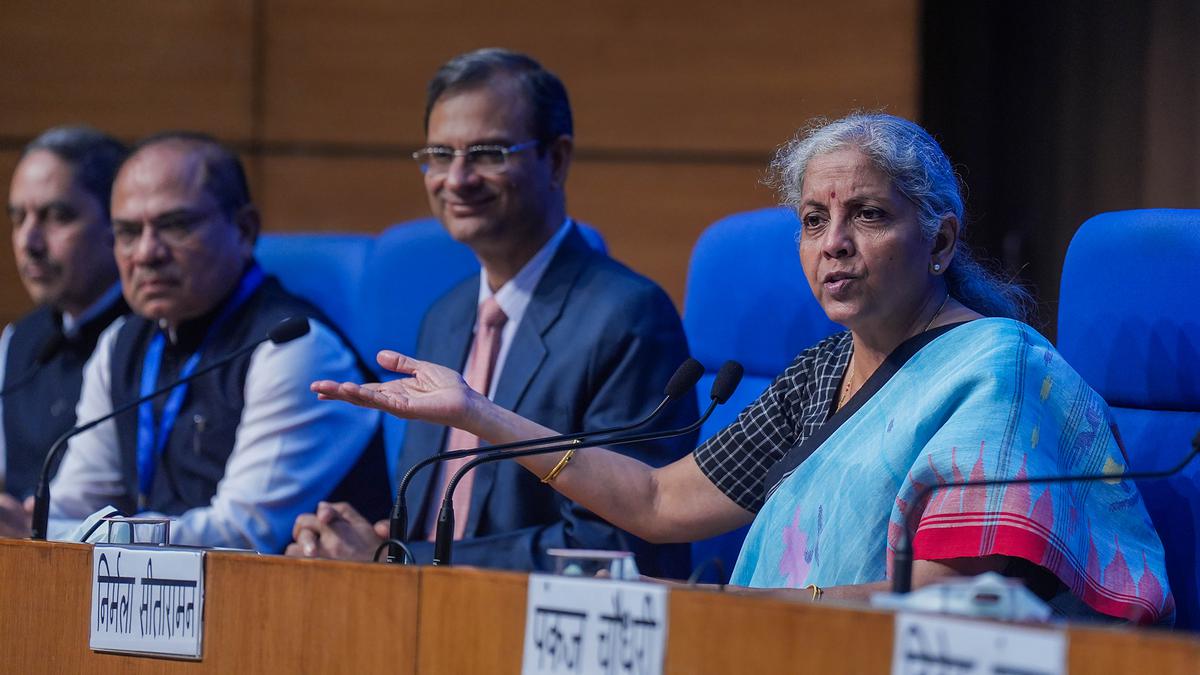December 14, 2023
Revival of Focus on GST Rate Rationalization

Introduction
- The government’s recent move to reconstitute the ministerial group within the GST Council signifies a renewed emphasis on reevaluating Goods and Services Tax (GST) rates in India.
Overview of Goods and Services Tax (GST)
Inception and Objective
- GST, launched on July 1, 2017, was a monumental shift, consolidating various indirect taxes across India into a unified system. Its primary objective was to replace multiple cascading taxes imposed by both the central and state governments.
Consumption-Based Taxation
- This comprehensive tax is levied at the point of supply, aligning with the destination of consumption. This approach benefits the state where goods or services are ultimately consumed.
Structure of GST Slabs and Their Scope
Tax Slabs
- The GST structure encompasses five primary slabs: 0%, 5%, 12%, 18%, and 28%, along with an additional cess on specific luxury and ‘sin’ goods.
Coverage of Products and Services
- Over 1300 products and 500+ services fall under the purview of the GST system, categorized within these defined slabs.
Periodic Revisions
- The GST Council periodically reviews slab rates, ensuring essential items face lower taxes while luxury goods incur higher rates.
28% Slab and Cess
- The highest slab, set at 28%, is reserved for demerit goods such as tobacco and luxury automobiles, often accompanied by an additional cess for revenue generation.
Identified Challenges within the Current GST Framework
- Complexity
- The multi-slab structure and varying rates have led to confusion and increased compliance expenses for businesses.
Rate Variability
- Diverse rates applied to different goods and services contribute to the complexity of the tax system.
Dual GST System
- The coexistence of Central GST (CGST) and State GST (SGST) further complicates compliance and administrative processes.
Cascading Taxation
- Despite being a value-added tax, GST sometimes results in cascading taxation, elevating the cost of goods and services.
Transparency Issues
- Clarity in tax breakdown on invoices remains a concern, impacting consumer awareness.
Collection Infrastructure
- Insufficient infrastructure for GST collection poses administrative challenges and delays.
Objective behind GST Rate Rationalization
Streamlining Tax Structure
- Reducing the number of slabs aims to simplify the tax system, easing compliance for businesses.
Addressing Discrepancies
- Rationalization aims to rectify instances where input taxes surpass final product taxes.
Revenue Considerations
- Merging slabs like 12% and 18% necessitates careful deliberation due to potential revenue loss concerns.
Anticipated Benefits of GST Rationalization
Enhanced Compliance
- A simplified GST structure would significantly alleviate the compliance burden on businesses.
Equitable Taxation
- Rationalization ensures a fairer distribution of the tax burden and optimal utilization of revenue.
Improved Tax Collection
- Optimizing GST slabs is expected to streamline tax collection and reduce compliance costs.
Concluding Thoughts
Imperative Need for Reform
- Rationalizing GST rates remains crucial for optimizing the efficiency of the tax regime.
Expected Outcomes
- A reformed GST system is poised to offer simplicity, facilitating easier compliance, improved revenue collection, and an overall more efficient taxation system.
January 30, 2025
January 20, 2025
January 14, 2025
